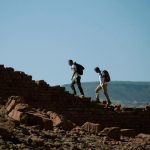The King Tut marathon will air on Friday, November 4, starting with 'The Golden Pharaohs' and ending with the premiere of 'Tut’s Toxic Tomb'.
On November 4, exactly one hundred years after British archaeologist Howard Carter discovered a step leading to the tomb of King Tutankhamun in the Valley of the Kings in Egypt in 1922, National Geographic will step into the fabled crypt to dig deeper into its mysteries.
Starting at 04:00 PM UAE and 03:00 PM KSA, National Geographic will embark on a five-hour marathon that delves, analyses and exposes the secrets behind the archaeological find.
National Geographic celebrates this landmark moment of discovery with a dive into this enduring attraction – sifting fact from fiction over the course of a series of special classics. The marathon closes with the premiere of Tut’s Toxic Tomb, which will air at 8:00 PM UAE and 7:00 PM KSA. The show puts one of the most enduring legends surrounding the tomb – the Pharaoh’s Curse – under scientific examination.
Join the National Geographic’s team of Egyptologists, including explorer, paleoanthropologist, evolutionary biologist and writer Ella Al-Shamahi, as they excavate the myriad reasons behind the mysterious deaths of four archaeologists, who died within months of breaking into an ancient, sealed tomb. Alongside her team, she analyses the circumstances of their deaths and presents evidence of a number of fatal causes, all stranger than mere myth: deadly, super-evolved pathogens, radioactivity and poison-laced treasures.
Ella Al-Shamahi said: “King Tut might have ruled almost 3000 years ago, Howard Carter might have discovered his tomb 100 years ago, and yet the world is still obsessed with the boy king. His tomb is probably the most famous archaeological find of all time, partly because of how much of a treasure trove it was; partly because of his young life and lineage; and partly because of how much the discovery itself and the so-called ‘curse’ gripped the public imagination. It was truly thrilling to investigate the curse of all curses – and to try to work out if there was any science behind it.”















































































